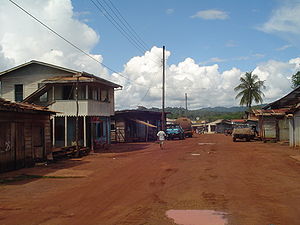Founded in the late 1940’s, where residents from a village to the south-east was granted plots of land there to start this new community. These plots of land were an improvement from the historic mud huts houses of the old village. The new era brought is better cultivation of fruits and vegetables, and was consistent as the village grew.
Enmore is significantly known for the Enmore Martyrs, who were killed during a labour dispute in 16th June, 1948. These men that died are namely, Lallabagee Kissoon, Pooran, Rambarran, Dookhie and Harry. They were shot during a strike, demanding the abolishment of the existing “cut and load” system in the fields. They passed away different days and it is said that Harry died in an actual fight with the shooters. An annual memorial day is held in Enmore in remembrance for these five brave men, on 16th June.













